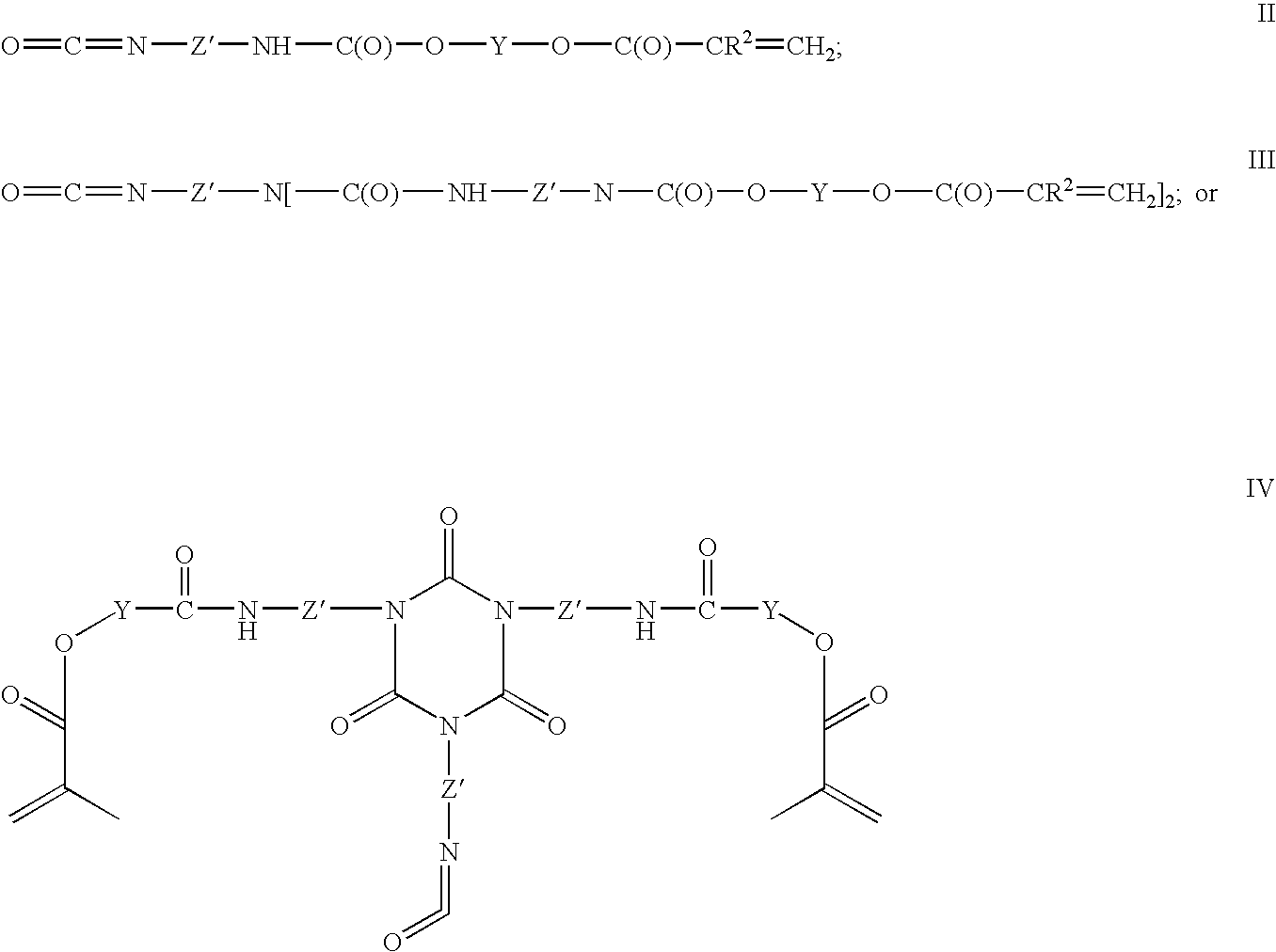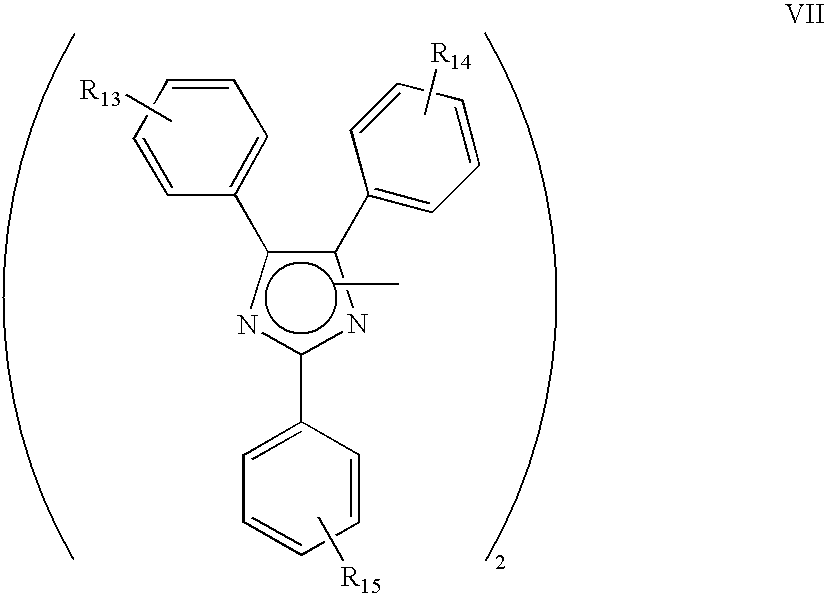Functional polymer
- Summary
- Abstract
- Description
- Claims
- Application Information
AI Technical Summary
Benefits of technology
Problems solved by technology
Method used
Image
Examples
example 1
Polymer of Methacrylic Acid and Methyl Methacrylate functionalized with: 1,6-Hexamethylene Diisocyanate Biuret—Polypropoxylated Hydroxypropylmethacrylate Moieties
[0095] A homogeneous solution containing 62.0 grams of methacrylic acid and 265.0 grams of methyl methacrylate was prepared. 75% by weight of the homogeneous solution were transferred into a second flask. The homogeneous solution of the first flask was diluted to 26.0% by weight solids and the homogeneous solution of the second flask was diluted to 86.50% by weight solids by adding sufficient methyl ethyl ketone.
[0096] The first flask was mixed and heated to reflux under atmospheric conditions. 2.0 grams of 2,2′-azobis (2-methylbutyronitrile) was added to the reaction mixture, mixed and held at reflux for about 30 minutes.
[0097] 6.25 grams of 2,2′-azobis (2-methylbutyronitrile) was mixed with 38.0 grams of methyl ethyl ketone and fed into the first flask along with the contents of the second flask over 4 hours while main...
example 2
Polymer of 2-Hydroxyethyl Methacrylate, Methacrylic Acid and Methyl Methacrylate Functionalized with: Isophorone Diisocyanate—Polypropoxylated Hydroxypropylmethacrylate Moieties
[0103] The step of preparing the acrylic polymer backbone was the same as in the method described in Example 1 above except that 70.0 grams of 2-hydroxyethyl methacrylate was added to the mixture of methacrylic acid and methyl methacrylate.
[0104] The reaction conditions for preparing the functionalized pendent groups were the same as described in Example 1 above except that 1 mole of isophorone diisocyanate was reacted with about one mole of hydroxy methacrylate to form a isophorone diisocyante hydroxy methacrylate moiety.
[0105] The isocyanate groups of the isophorone diisocyanate hydroxy methacrylate moiety were reacted with the hydroxyl groups of the 2-hydroxyethyl methacrylate moiety under the conditions described in Example 1 to form a functionalized polymer with functionalized pendent groups as shown...
example 3
Synthesis of 1,6-Hexamethylene Diisocyanate Trimer-Polyalkoxylated Hydroxyalkyl (meth)acrylate, or a 1,6-Hexamethylene Diisocyanate Trimer-Hydroxyalkyl (meth)acrylate (urethane / acrylate with at least one free isocyanate)
[0106] One mole of 1,6-hexamethylene diisocyanate trimer is added to a clean dry, nitrogen sparged flask. 0.06 grams of dibutylin dilaurate, 0.05 grams of Irganox® (antioxidant) and 160.0 grams of methyl ethyl ketone are also added to the flask. The flask is sparged with dry air and stoppered. The components are mixed and heated at 35° C. Two moles of a polyalkoxylated hydroxyalkyl (meth)acrylate, or two moles of hydroxyalkyl (meth)acrylate are added to the flask, mixed with the trimer, and heated at 35° C. for one hour. The reaction temperature is increased to 60° C. and the reaction is maintained for 3 hours. The resulting compound has the following general structure where n is an integer of from 0 to 1000, preferably from 1 to 200, 1 is an integer of from 1 to 10...
PUM
 Login to View More
Login to View More Abstract
Description
Claims
Application Information
 Login to View More
Login to View More - R&D
- Intellectual Property
- Life Sciences
- Materials
- Tech Scout
- Unparalleled Data Quality
- Higher Quality Content
- 60% Fewer Hallucinations
Browse by: Latest US Patents, China's latest patents, Technical Efficacy Thesaurus, Application Domain, Technology Topic, Popular Technical Reports.
© 2025 PatSnap. All rights reserved.Legal|Privacy policy|Modern Slavery Act Transparency Statement|Sitemap|About US| Contact US: help@patsnap.com



